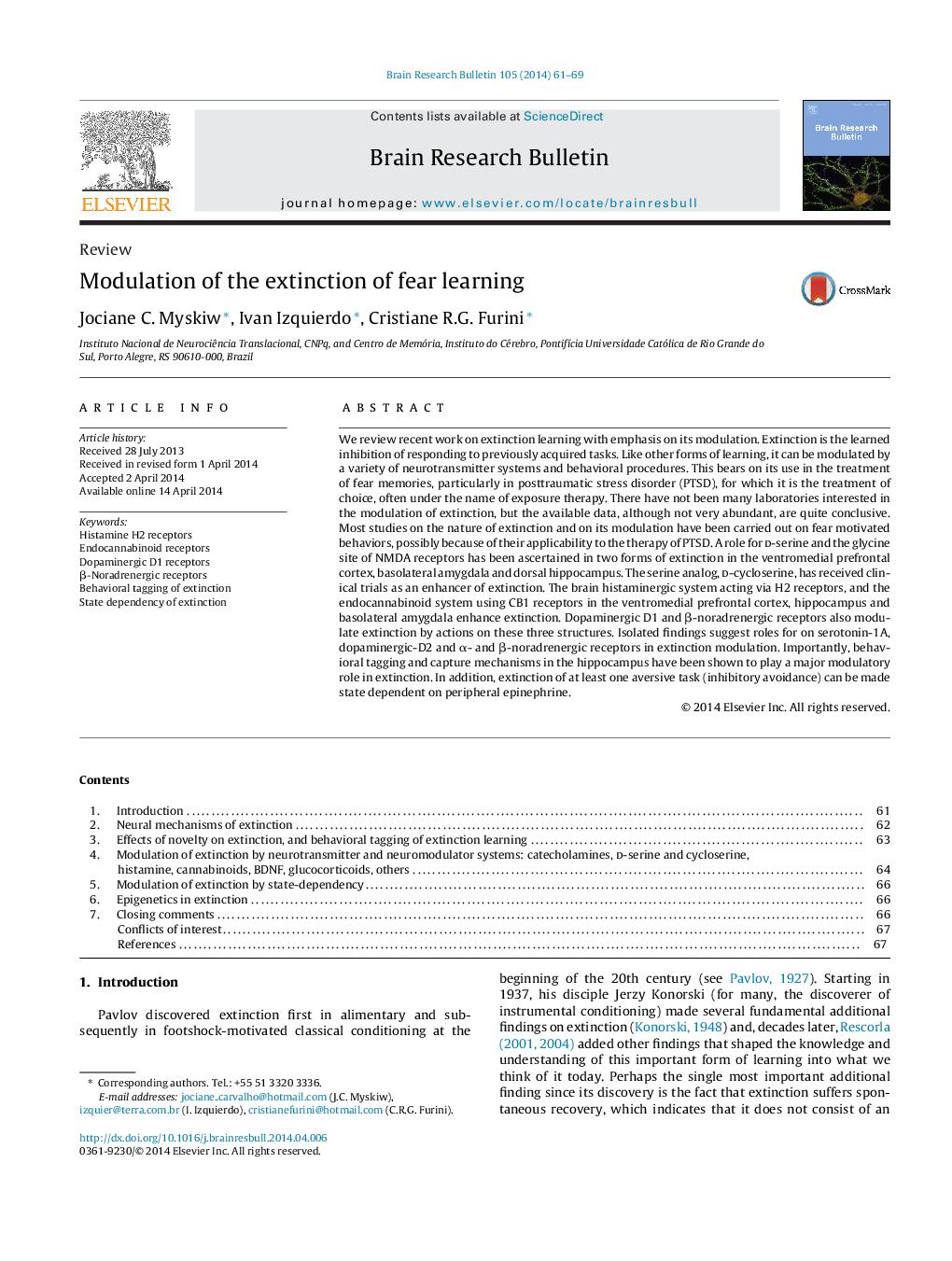| کد مقاله | کد نشریه | سال انتشار | مقاله انگلیسی | نسخه تمام متن |
|---|---|---|---|---|
| 6261806 | 1613250 | 2014 | 9 صفحه PDF | دانلود رایگان |
- Recent papers on memory enhancement are reviewed.
- Recent papers on extinction learning are reviewed.
- Reconsolidation and the issue of memory erasure are discussed.
- Sex hormone modulation of consolidation and extinction are discussed.
We review recent work on extinction learning with emphasis on its modulation. Extinction is the learned inhibition of responding to previously acquired tasks. Like other forms of learning, it can be modulated by a variety of neurotransmitter systems and behavioral procedures. This bears on its use in the treatment of fear memories, particularly in posttraumatic stress disorder (PTSD), for which it is the treatment of choice, often under the name of exposure therapy. There have not been many laboratories interested in the modulation of extinction, but the available data, although not very abundant, are quite conclusive. Most studies on the nature of extinction and on its modulation have been carried out on fear motivated behaviors, possibly because of their applicability to the therapy of PTSD. A role for d-serine and the glycine site of NMDA receptors has been ascertained in two forms of extinction in the ventromedial prefrontal cortex, basolateral amygdala and dorsal hippocampus. The serine analog, d-cycloserine, has received clinical trials as an enhancer of extinction. The brain histaminergic system acting via H2 receptors, and the endocannabinoid system using CB1 receptors in the ventromedial prefrontal cortex, hippocampus and basolateral amygdala enhance extinction. Dopaminergic D1 and Ã-noradrenergic receptors also modulate extinction by actions on these three structures. Isolated findings suggest roles for on serotonin-1A, dopaminergic-D2 and a- and Ã-noradrenergic receptors in extinction modulation. Importantly, behavioral tagging and capture mechanisms in the hippocampus have been shown to play a major modulatory role in extinction. In addition, extinction of at least one aversive task (inhibitory avoidance) can be made state dependent on peripheral epinephrine.
Journal: Brain Research Bulletin - Volume 105, June 2014, Pages 61-69
